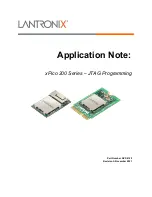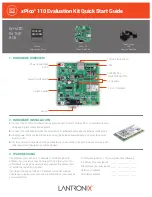
Decentral Solutions
■
Derating for ambient temperature
The ambient temperature (T
AMB,MAX
) is the maximum
temperature allowed. The average (T
AMB,AVG
)
measured over 24 hours, must be at least 5 °C
lower. If the variable frequency drive operates at
temperatures above 104 °F (40 °C), a derating of
the rated output current is necessary.
■
Temperature-dependent switch frequency
This function ensures the highest possible switch
frequency without the variable frequency drive
becoming thermally overloaded. The internal
temperature is the actual expression of the degree
to which the switch frequency can be based on
the load, the ambient temperature, the supply
voltage and the cable length.
The function ensures that the variable frequency drive
automatically adjusts the switch frequency between
f
sw,min
and f
sw, max
(parameter 411), see drawing below.
■
Derating for air pressure
Below 3000 ft (1000 m) derating is not necessary.
Above 3000 ft (1000 m) the ambient temperature
(T
AMB
) or max. output current (I
MAX
) must be derated
in accordance with the diagram below:
1. Derating of output current versus altitude at
T
AMB
= max. 104 °F (40 °C).
2. Derating of max. T
AMB
versus altitude at
100% output current.
■
Derating for running at low speed
When a motor is connected to a variable frequency
drive, it is necessary to ensure adequate cooling of
the motor. At low rpm values, the motor fan is not
able to supply an adequate volume of cooling air. This
problem occurs when the load torque is constant (e.g.
with a conveyor belt) across the full regulating range.
The reduced amount of ventilation determines the
permissible torque in continuous operation. If the motor
is to run continuously at an rpm lower than half the
rated value, extra cooling air must be supplied to the
motor. Instead of providing extra cooling, it is possible
to reduce the motor load ratio. This can be done by
selecting a larger motor. However, the design of the
variable frequency drive puts limits on the size of motors
that can be connected to the variable frequency drive.
■
Motor cable lengths
The variable frequency drive has been tested using a 30
ft (10 m) unshielded/unarmoured cable and a 30 ft (10
m) shielded/armoured cable and has been designed to
work using a motor cable with a rated cross-section.
■
Vibration and shock
The variable frequency drive has been tested according
to a procedure based on the following standards:
IEC 68-2-6: Vibration (sinusoidal) - 1970.
MG.90.F2.22 - VLT is a registered Danfoss trademark
182
















































